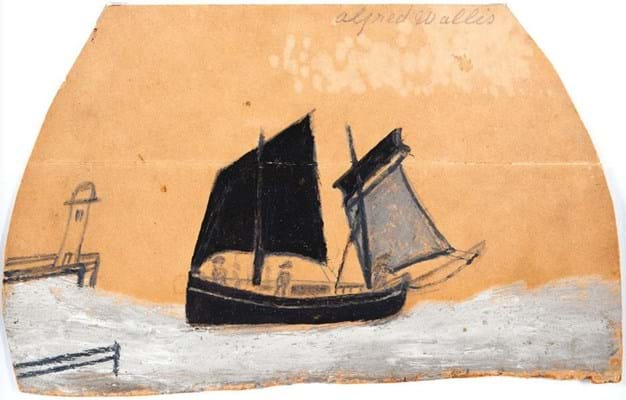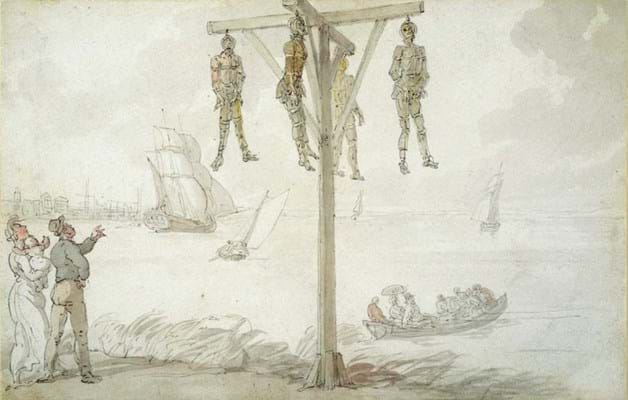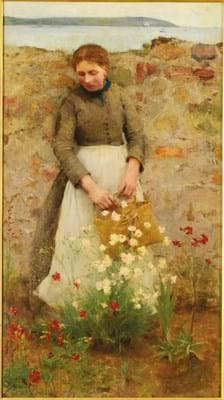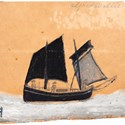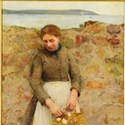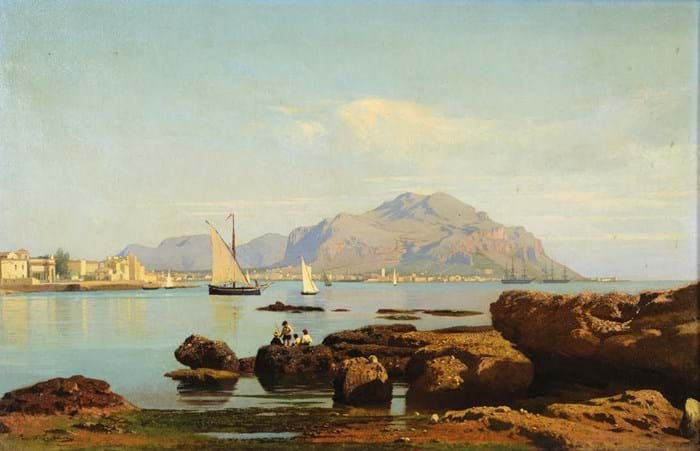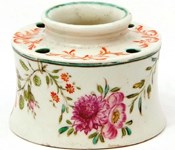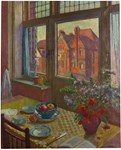On April 12 – the second date to have been earmarked as ‘Brexit Day’ – Somerset saleroom Lawrences (20% buyer’s premium) of Crewkerne offered more than 270 pictures spanning five centuries of art history as part of a wider sale incorporating furniture, clocks and rugs.
While the picture section contributed a respectable £200,000, take-up hovered around 75% – a figure usually expected by the auction house to be in the 80s.
Richard Kay, director at Lawrences, said he had noted an air of “hesitation and unease in the market at moment”, but added it was hard to determine whether the lower take-up in his sale was caused by the distraction of Brexit or a more general downbeat economic mood.
“I’m reluctant to read too much into it,” he said, “but there was a feeling that people’s thoughts were elsewhere in the middle of April.”
Not for the first time in a picture sale, the trickiest areas to disperse centred on middle market material pitched between £800-3000, 19th century watercolours (particularly those of a Victorian flavour) and ‘commonplace’ pictures that Kay described as “not scarce enough in their own right to be desirable for being unusual”.
Conversely, animated bidding emerged for material that combined quality with an eye-catching scene and a well-established name. “The market has become increasingly polarised between the best and the rest. When something is really worth having people disregard precedent and go for it,” said Kay.
Macabre and merry
A case in point at Lawrences was a striking memento mori-esque drawing titled The Gibbet by the major Georgian caricaturist Thomas Rowlandson (1756-1827).
Life and jollity is jarringly juxtaposed with death in this 5½ x 9in (14 x 23cm) watercolour where a grim group of cadavers dangle above a merry boating group while a young couple cradle a newborn baby in their arms. The subject of gibbeting – the disturbing historical practice of erecting wrongdoers in metal torture devices – does not appear all that often in Rowlandson’s oeuvre, although the Paul Mellon collection of British art at Yale University in Connecticut features two such watercolours.
“This was a refreshingly unusual work and quite a mournful subject for Rowlandson. Its quirky and macabre appeal chimed rather well with Rowlandson collectors,” said Kay.
Against an £800-1200 guide, it drew stiff competition from private collectors in the UK and North America before it sold via thesaleroom.com to the London trade at £6000.
Among the financial highlights of the sale was Picking Carnations, a 2ft 7in x 17in (80 x 44cm) Newlyn School oil portrait by Henry Scott Tuke (1855- 1928) of his long-serving housekeeper Elizabeth Jane Fouracre.
Painted in 1890, the tender portrayal of this modestly dressed female servant, poised to pick carnations in the walled garden of Tuke’s Cornish home in Falmouth, is a far cry from the depictions of young athletic male nudes posing on the beaches of Cornwall for which he is so strongly associated. Nevertheless, this somewhat uncharacteristic subject drew several bids including from an academic institution before it was knocked down to a private collector for a mid-estimate £20,000.
The painting was given the approval of Tuke authority Catherine Wallace, who admired the artist’s skilful technique, writing in the catalogue note that it showed “Tuke’s lively brushwork but with close attention to detail in the rendering of the hands and face”.
Wallace also revealed that the artist had sold the painting to friends for £30, but it was never paid for and was subsequently returned to him.
Fouracre served as Tuke’s housekeeper from 1885 until her death in 1916 and was described by the artist’s sister as “the most devoted and faithful housekeeper a man ever had”.
Italian view
Matching the Tuke sum was a trademark view of Monte Pellegrino and the Bay of Palermo in Sicily by Francesco Lojacono (1838-1915), which sold on bottom estimate to the Italian trade. Lojacono has an almost exclusive following in southern Italy.
It was noted in the catalogue that Lojacono developed a style “remarkable for its clarity of light and the crisp neatness of its technique” and together with his pupils Michele Catti (1855-1914) and Antonio Leto (1844-1913) forms the so-called canonical triad of the Sicilian landscape artists of the Belle Époque.
Well-sized at 19in x 2ft 5in (48 x 75cm), the oil on canvas also had an appealing provenance having been owned by Austrian art collector Hugo Schwab, a regular bidder at Sotheby’s from the 1960s until his death in 1974. A Lojacono landscape titled On the Neapolitan Coast, which sold at Sotheby’s in 1973 for £1000, is thought to be the same picture.
“ The market has become increasingly polarised between the best and the rest
Prices for Lojacono’s landscapes have slipped since peak demand around six to seven years ago, when a work like this may have topped £30,000 or £40,000. A weaker Italian economy and a harder market for coastal paintings have played a part in the falling prices.
Cornish coaster
Another artist who took inspiration from his local coastline was the untrained Cornish mariner Alfred Wallis (1855-1942).
The Lawrences sale included Fishing Boat off a Pier, a box-ticker for Wallis collectors showing a typical Cornish lugsail fishing boat with its distinctive outrigger and topsail. Executed with just two colours on a signature bit of irregular-shaped 5 x 9in (13 x 22cm) old card, it tipped over top estimate to sell to a collector in Cornwall for £13,000.
“What people want from a Wallis is that feeling of an ad hoc creation, done quickly in pencil or a bit of brush on a loose piece of broken card,” said Kay.
It was the second work by the painter to be offered at Lawrences from the collection of Christopher Mason (1928-2018), a film maker, writer and painter who married Joanna Carrington, artist and niece of Bloomsbury group painter Dora Carrington.
Unlike French Fishing Boat, a larger work in oil that sold in January for £16,500, this also had provenance to Mason’s friend Jim Ede, the first major collector of Wallis’ pictures to see both their commercial and academic value.
In his memoir, Mason recalled how he was given the picture while staying at Ede’s home by the River Loire in 1955. Ede opened an oak armoire and “falling to the floor in a shower came at least fifty pieces of cardboard, each one an Alfred Wallis painting”.


